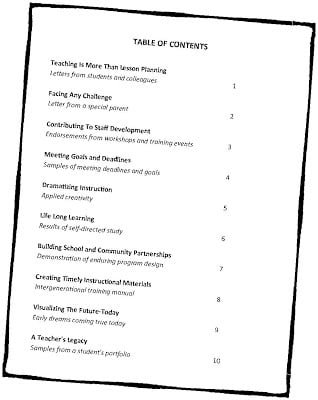A career portfolio guide
Career portfolios, also referred to as professional portfolios, are a valuable career development tool. Here’s a guide to help you understand what a career portfolio is, how to create one and how to use it to help you get ahead in your career.
What is a career portfolio?
A career portfolio is a collection of materials evidencing your qualifications, skills, experience and personal qualities. Used as a marketing tool, your career portfolio is a powerful visual aid which allows you to showcase your career accomplishments and provide insight into your capabilities.
It can be used to apply to jobs, apply to college or training program and to justify seeking a pay rise. In addition to demonstrating your skills and abilities, it allows you to keep track of your own personal and professional development.
What does a career portfolio look like?
There are two types of career portfolios: a traditional, hard-copy version and a digital or virtual one that can be accessed online. Here, we’ll focus on how to create a hard-copy version.
Any presentation or display folder with protective plastic sleeves to protect your documents and other materials can be used for your career portfolio. You can pick these up from a stationery or office supplies store, online or even your local supermarket is likely to have an office supplies section offering a range of suitable folders.
Creating a career portfolio – Step-by-Step
- Choose a presentation folder suitable for your needs
- Identify who your audience will be e.g. Potential employer or client, current employer, college or university, professional recognition body etc.
- Decide on the sections you will include
- Create a Table of Contents
- Gather evidence materials e.g. certificates, photos, letters, articles, awards etc.
- Insert evidence materials in folder being sure to display them in as professionally and visually pleasing ways as you can.
- Add dividers to distinguish different sections using introductory title pages if appropriate
- Show your completed career portfolio to someone for feedback – ask them if they find it easy to navigate, read and understand.
What does a career portfolio include?
One of the questions I’m most frequently asked is what to include in a career portfolio. What you include in your career portfolio will depend on the purpose for which you are creating it. A portfolio developed to apply for a place at a college or university will be different to one used to apply for a job or a pay rise.
Depending on the length of your career and the amount of evidence you have, you can either begin your portfolio with your CV (if you’re just starting out in your career for example) or a Table of Contents page.
Here is an example of a basic Table of Contents:
- CV/Resume
- Education, Qualifications and Training
- Ongoing Professional Development
- Employment/Work History
- Volunteering/Community Involvement
- References/Recommendations
Another interesting and creative way to present your Table of Contents is to break it down into the demonstration of key skills and abilities.
If the role you are applying for calls for an individual with ‘superior sales skills’ for example, you could include this as a section and provide evidence by way of sales figures in graphical format, performance review extracts, sales awards etc.
Here is an example of a Teacher showcasing their talents (Used with permission from Martin Kimeldorf)

If you decide not to include a Table of Contents, start your portfolio with a freshly printed copy of your CV and continue to fill the sleeves with your evidence documents as described above. You can use dividers to distinguish between the different sections of your portfolio in line with the sections of your CV.
Examples of what to include:
Degrees, certificates and diplomas
- Professional development activities where you received a certificate of attendance
- Conferences, seminars and other events can be evidenced by including a flyer, programme or outline
- If you use an e-portfolio programme to record your continuing professional development (CPD) you can include a printout demonstrating your commitment to your ongoing CPD. Information about current or future professional development activities can be included, e.g. an accountant working towards CPA certification
Employment/work history
- Evidence your employment such as employment contracts, position descriptions and job advertisements
- Performance review documents, recommendations for promotion and operational documents such as sales figures etc. (don’t include any commercially sensitive information)
- Samples of your work e.g. if you’re applying for a job as an Illustrator you should include examples of the kinds of illustrations you have produced and the projects you have worked on
- Accolades received for your work e.g. a favourable product or service review or special awards received
- Photographs, business cards, staff profiles and media relating to you starting in or progressing in the role are other forms of evidence you can include
References
- Any written references or letters of recommendation you have from past employers, supervisors or colleagues
- Recommendations from LinkedIn can be printed and included
- Testimonials from past or present customers or clients are another great way to boost the references section of your portfolio
How do I use my career portfolio?

Lisa LaRue, MCareerDev, RCDP, MAC
Career Coach, EMCC-Accredited Master Practitioner Coach and CDI-Registered Career Development Professional with more than 20 years’ experience helping achieve successful and fulfilling careers.






